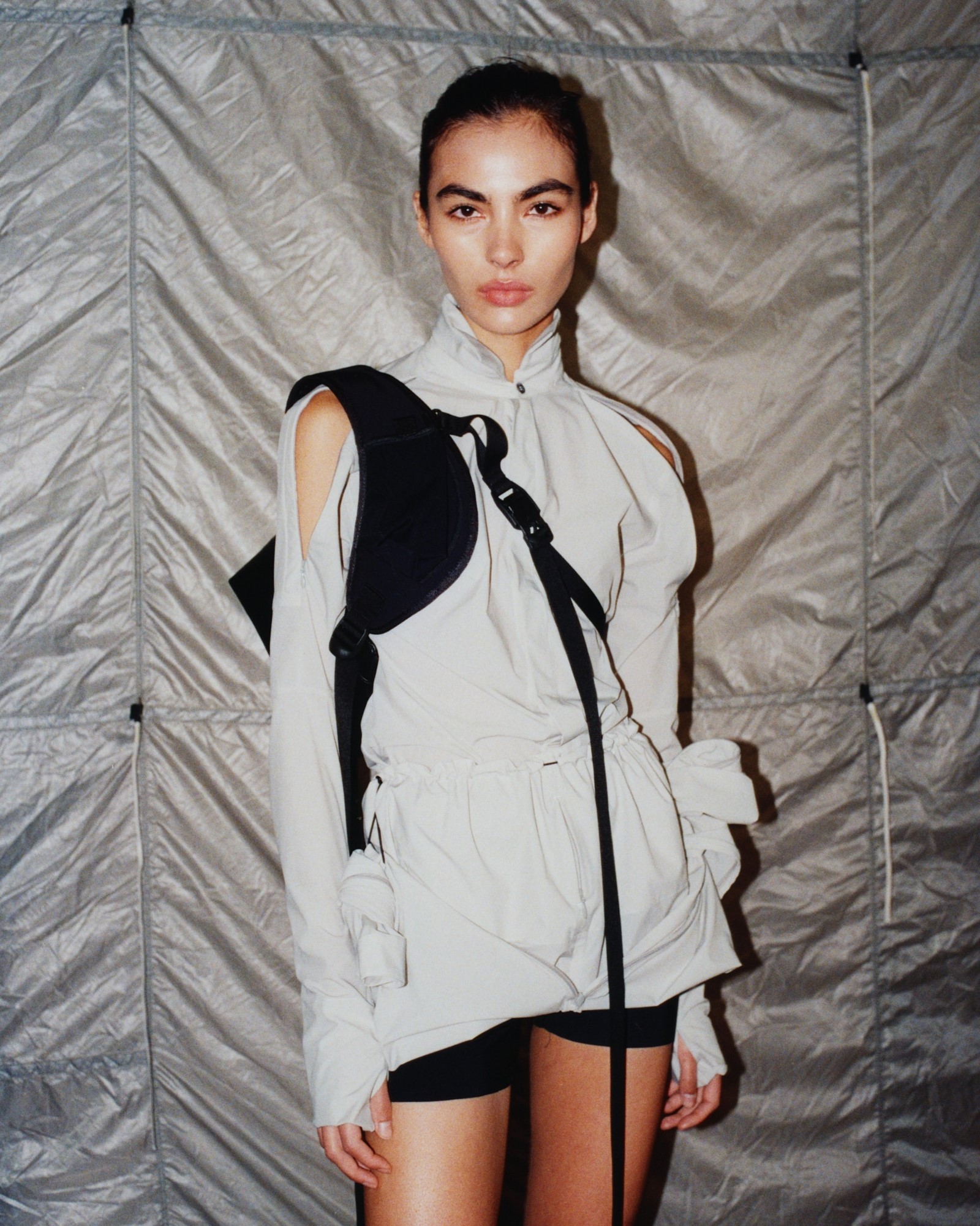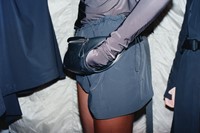After reading Streetwalking the Metropolis: Women, the City, and Modernity, Johanna Parv became fixated on a very specific image of a woman. The book, written by Deborah L Parsons and published in 2000, focuses on the emergence of the ‘flâneuse’ archetype – the female alternative to the male ‘flâneur’ – after the Industrial Revolution: an independent, working woman who was navigating the city, all alone, for the first time in history. “When single women moved to cities, especially London, they were seen as sluts or whores if they walked by themselves,” says Parv, speaking from her studio a week before her Autumn/Winter 2024 show. “That’s when the fashion changed as well. I quite liked that visual symbol of this girl – independent, strong – on the street by herself, working alone, being single. It’s very me – I’m single, and I’ve lived alone since I was 19. What’s wrong with that?”
Although women’s rights have improved immeasurably since, to walk the street as a woman in the 21st century can still be a fraught experience; as a woman herself, this is something Parv always has at the forefront of her mind while designing clothes. Since launching her eponymous label in 2020 after graduating from Central Saint Martins, the Estonian-born, London-based designer has carved out a niche of impossibly chic activewear, with ensembles that city-dwelling women can commute to work in during the morning – whether they choose to walk, run or cycle – and can also wear in the evening, out on the town. “You don’t want to wear intimidating performance clothes to cycle to work,” Parv explains. “What if we were to make a traditional suit and skirt that you could cycle to work in, but do it so that you don’t have to lose your femininity or personal style? It’s about looking elegant before and after the commute.”
On the Friday night of London Fashion Week, Parv showed her third and final collection with Lulu Kennedy’s infamous talent incubator, Fashion East, a scheme that has launched the careers of designers including Simone Rocha, JW Anderson, and Craig Green. Showing alongside Olly Shinder at the Truman Brewery in Shoreditch, Parv unveiled a slick, wintery collection of suits, jackets, trousers and miniskirts executed in a dark colour palette of greens, browns and blacks, with a dash of mint and tourmaline blue thrown in. This season, the designer used more wool (for warmth) and less lycra, with elegant pieces that carved up the body in interesting ways; the collection featured a brown woollen jacket which unzips sculpturally on the shoulders, a mint shell jacket exposing some midriff, and a cycling-inspired lycra top with a ventilation opening at the back to reveal a sliver of skin. “I just really appreciate if you can look sexy when you want to look sexy, but in a more clever way,” says Parv of the subtle sensuality of her designs.
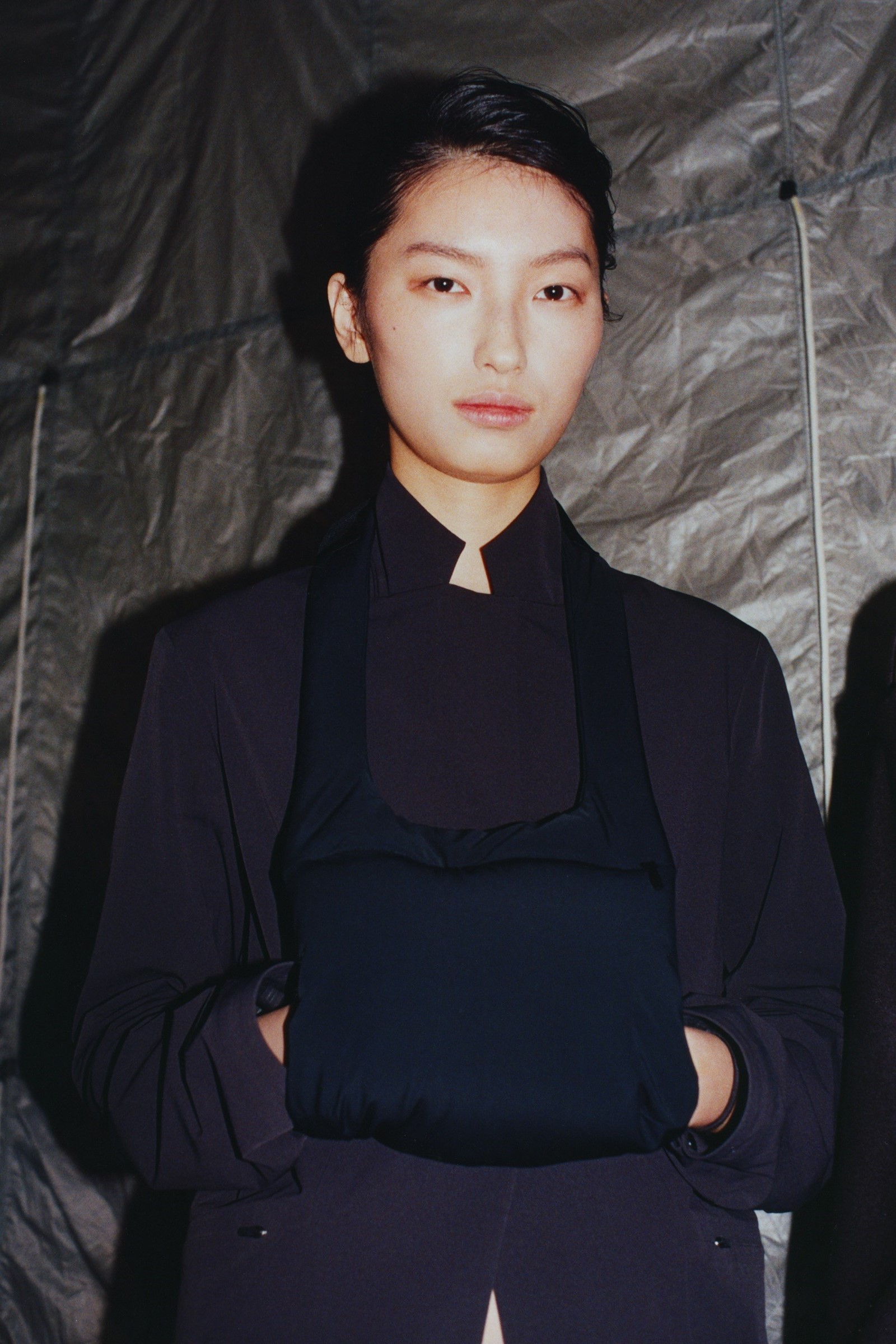
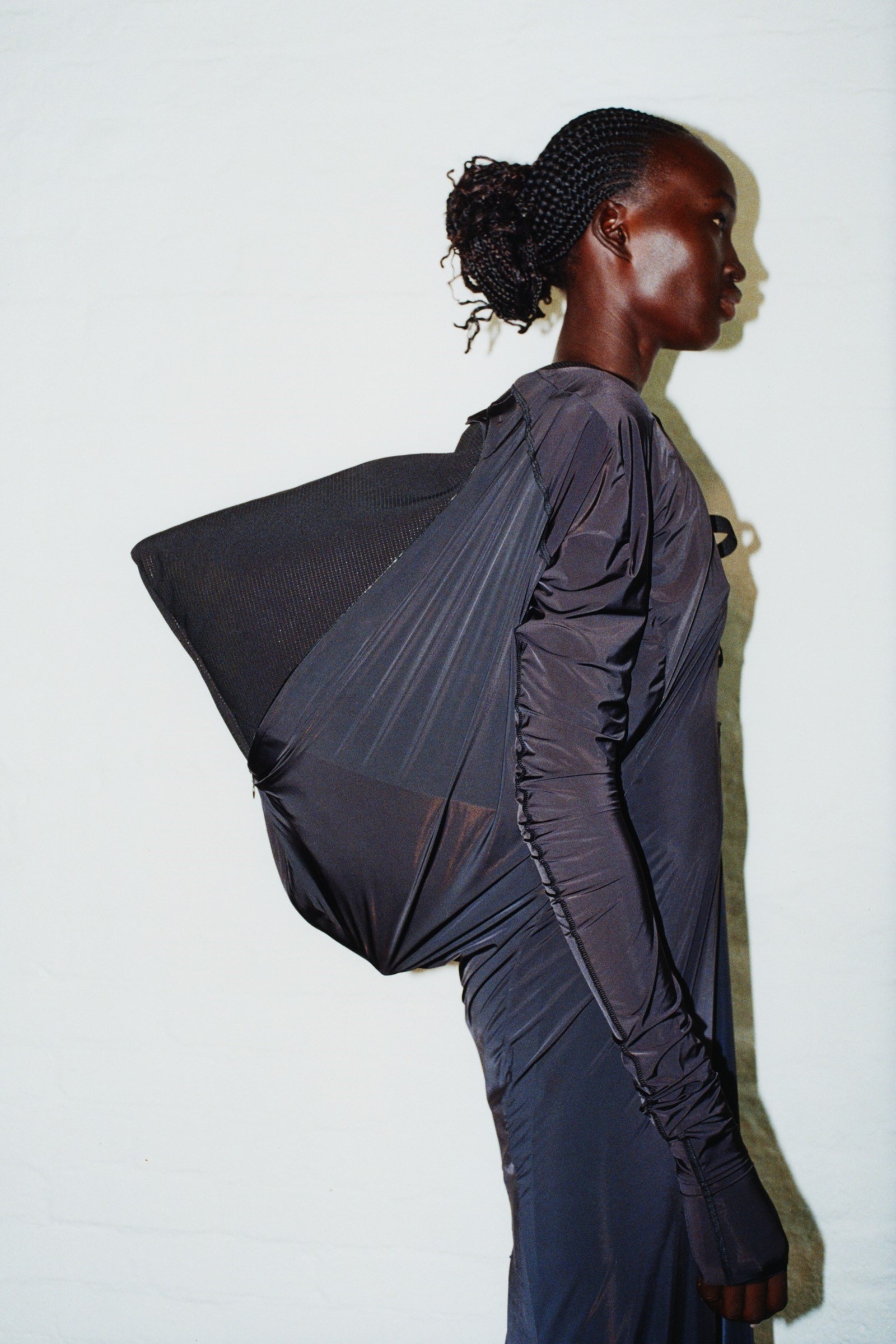
To the sounds of sombre piano and industrial techno, models marched down the runway in a collection the designer described as “almost snakey and alien, dark and mysterious.” This was clothing for the 21st-century flâneuse; an option for active women who want to look chic while staying warm; at the show, models hands were tucked snugly into nylon and leather bags that double up as handwarmers for the colder months. They also wore heels – but who can cycle, or run, in heels? “I really like the idea of women being able to wear heels all the time. But in reality, yes, everyone’s wearing trainers or flats,” says Parv. “It’s about the storytelling element. I want to make fashion more realistic because I think it can be unrealistic. But at the same time, it has to have the parts of unrealistic and realistic together. It’s about the balance.”
Growing up in Estonia, Parv trained as a runner and an actor in early life; despite her love of Fashion TV, becoming a designer seemed like an unlikely path. “In Eastern Europe, we shared clothes because we didn’t have that much money to buy things,” she says, recalling the evenings when her auntie would bring bin bags full of old clothes for her and her sister to try on. But she cites the influence of her mother, a designer, and her father, an engineer, as sparking her creativity. “In the Soviet Union, that’s what women do: they are fixing socks and dresses and making feminine things,” she says. “And then there’s this masculine building and engineering. I was much more interested in what my dad was doing. He told me that the most important thing is the foundation – whatever you start building, you need to build the foundation first. And that’s how I design, with this engineering mindset. I see designing as building. I knew that was the key to everything, in order to create the shapes that I want to see.”
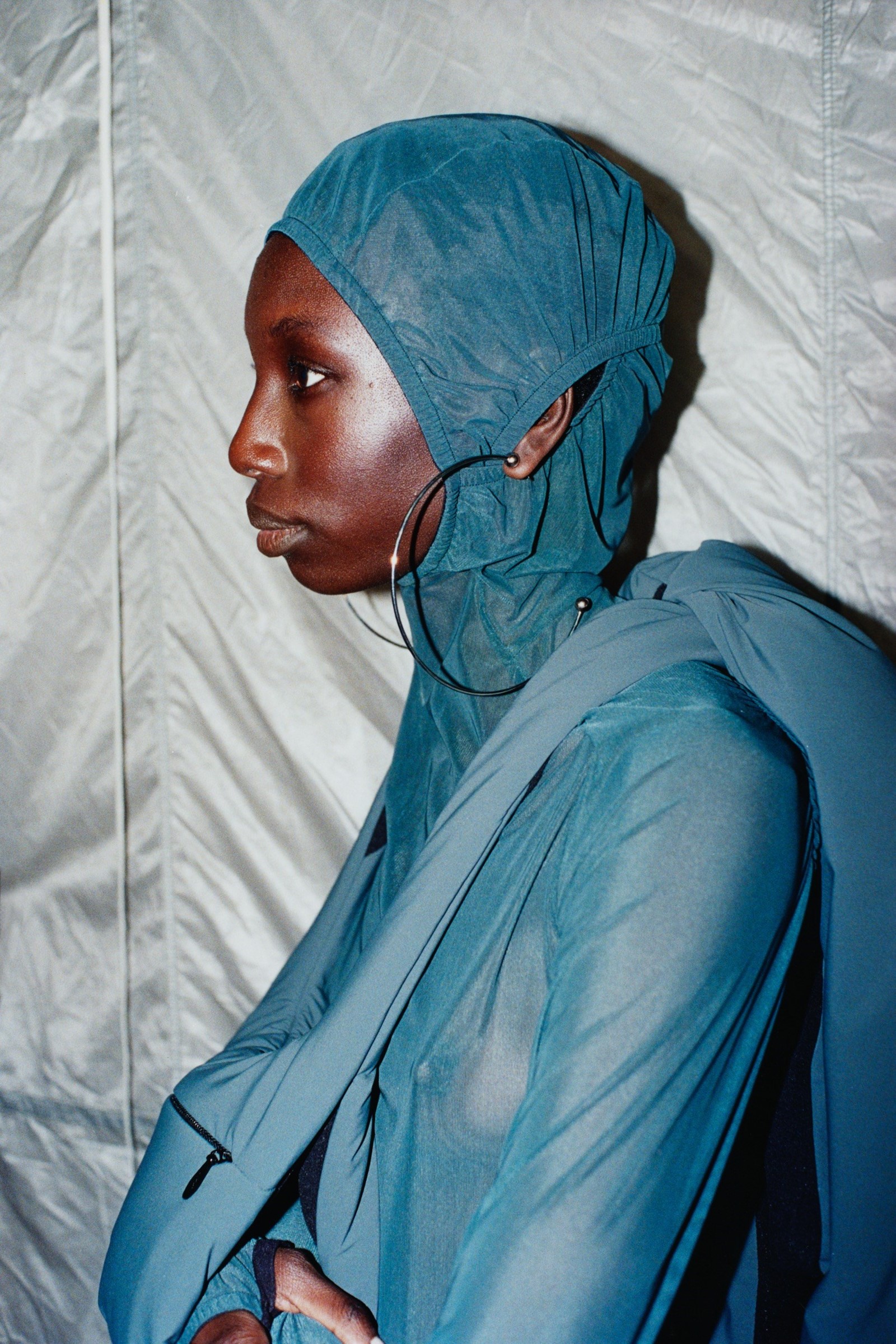
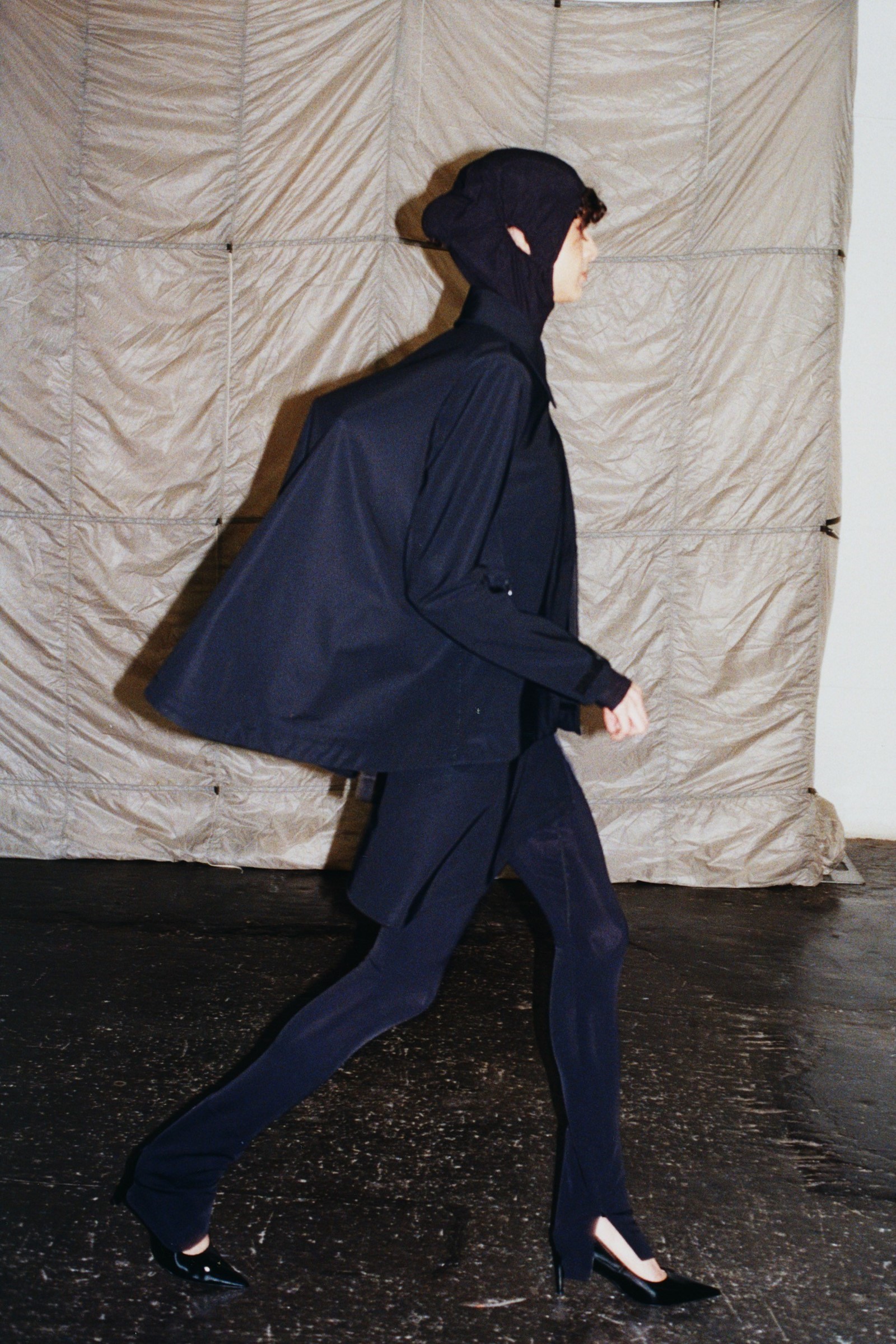
In a bid to improve her English, Parv applied to Central Saint Martins summer school in her last year of high school on a whim after her friend told her about it. She arrived with no ambitions to become a designer, but the teachers told her to come back to do a foundation. “I was like, ‘What even is foundation?’” And then I got in,” she says. “That’s how it started.” In 2020, she graduated from the Central Saint Martins MA course with a collection that took professional women cycling through London‘s streets as her muses.
The now-ubiquitous gorpcore trend – of wearing outdoorsy, technical clothes like hiking boots and puffer jackets in cities for purely aesthetic reasons – has historically been designed for men, by men, and has spawned a much-memed archetype: the urban man, most likely living in east London, who pops to his local corner shop wearing a head-to-toe Arc’teryx fit. The Johanna Parv woman, on the other hand, is elegant and actually active; her clothes seamlessly combine form and function in a way that the fashion world has not seen before. “There’s so much space in practical womenswear to ask questions that, still, a lot of people haven’t asked,” she says.
Parv’s own background as a professional middle-distance runner and frequent cyclist in London has greatly influenced her approach. “I always knew I wanted to do something like Nike,” she says. “I felt like the sports clothes were so exciting.” But does the Johanna Parv wearer need to be sporty? “No. It’s about creating clothes that make you feel like you can be active, but you shouldn’t feel that you have to,” she says. Instead, the brand floats comfortably in the space between activewear and high-end, luxury womenswear. “We can’t be stuck in what we think fashion is, or what we think sportswear is,” she says. “It’s about combining aesthetics with actual practicality, and keeping it really minimal, simple, and universal so it will last for a long time.”
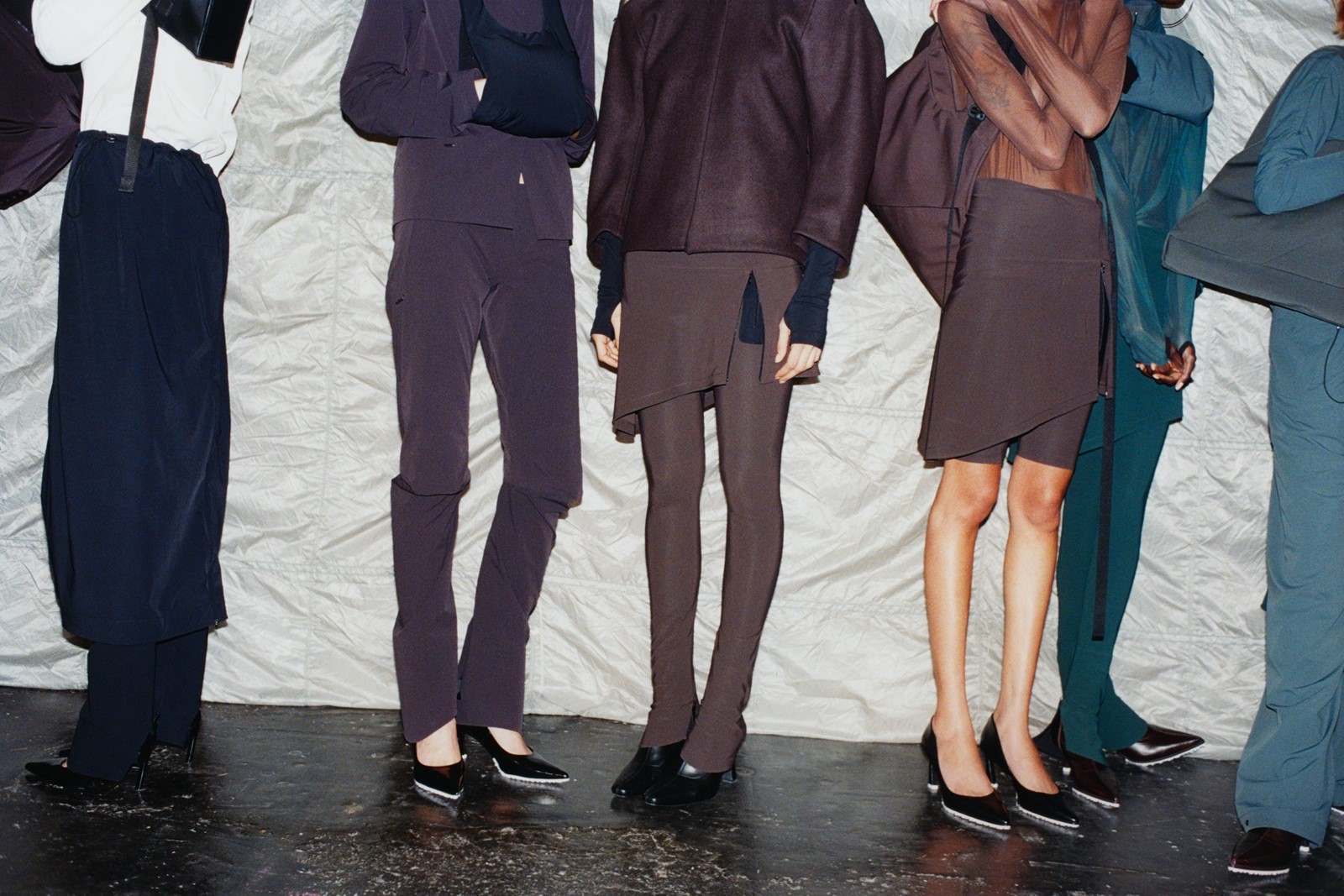
At the end of the day, Parv says the brand is about empowering women, something which no one is in a better position to do so than herself. “The sensibility of me being a woman and designing for women is very important,” she says. “There’s the danger of, maybe if you look too sexy, then you’re appealing to the wrong people. And then if you look modest, you’re a bit more safe because everybody thinks you’re a good girl,” she says knowingly. “I’m going to have miniskirts this season, but I don’t see that as dangerous. I see that as empowering. I do also size them up so you can wear them on the top of jeans.”
In the future, Parv wants to create helmets and actual protective gear – she even cites bulletproof clothing as an aim, although this is probably more of a conceptual desire. For now, though, Parv’s mission is to make women look good while enabling them to move around the city streets freely. “I guess I’m allowing the ability to protect yourself, like, even just running away or cycling faster or running faster. But having real protection is a real aim for the future,” she says. “From the start, I wasn’t just like, ’I’m going be a fashion diva’. I always knew that being a designer is more than that.”
